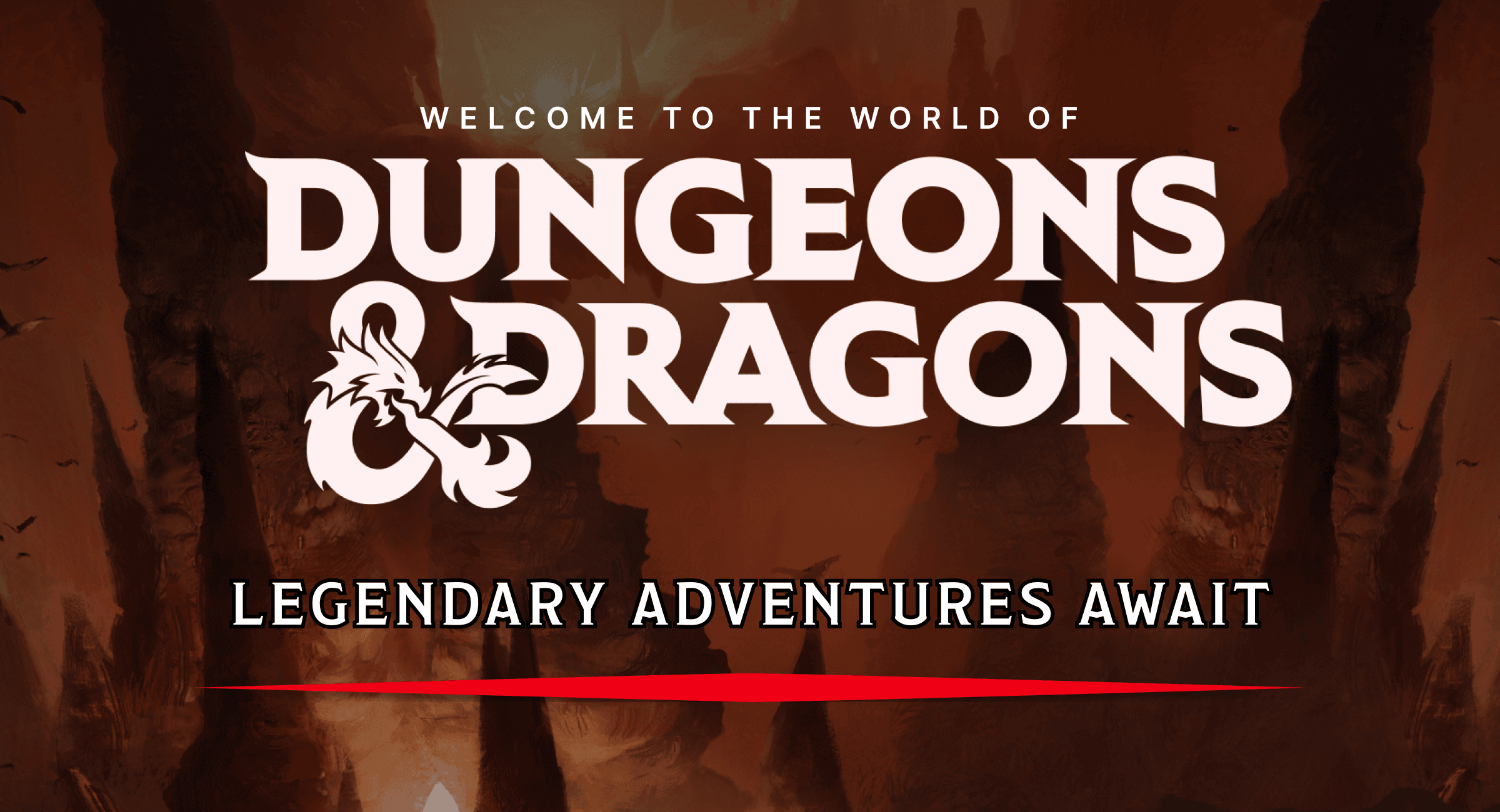

About the Players
Sign up list
Jukebox from Friends of Kinopio: Cheap | ちーぷ (JamesYork)
About the DM
Interested // waitlist
Character sheets


Quick guide from the source:
1. Make the image large. Then you’ll have to lock the sheet.
Skill Proficiencies -
This will be your input field text - once you lock/mark as complete, it will fade slightly.
The Townhall
See next section to the right to see examples of what it could look like as a play-by-post in Kinopio
Response Time: Aim to respond within the agreed timeframe. If you’ll be unavailable, let the group know in advance.
OOC (Out of Character) Communication: Use a separate thread or designated format (like brackets or spoiler tags) for any questions or comments outside the game narrative.
Flexibility and Patience: PbP games move more slowly than in-person games, so expect a slower pace. Be patient with others, especially if life events delay responses.
Posting Frequency: Set a clear posting schedule—like once a day, every few days, or weekly. This keeps everyone on the same page and helps prevent delays.
There is some rules for Play-by-post setup:
_These are the general PbP rules but we’ll work out how this work in Kinopio for 5e - It be easier if I just show an example space (See right section)
Most play either by: - Forums - Discord - Private messenger We’re doing Kinopio
Play-by-Post (PbP): A TTRPG format where players write out actions and dialogue over text, often in forums or chat apps, letting the game unfold slowly.
The coming of new technology - ala internet, we can now communcate and play via:
Play-by-Mail (PbM) was a method where players sent their game actions through postal mail, often in wargames or RPGs. Turns took days or weeks as players waited for letters, creating a slower but suspenseful game flow that allowed for deep strategy and storytelling.
In-Person Play: A TTRPG format where players meet face-to-face, allowing for real-time interactions and a more immediate game flow.
Traditionally it was played in two modes:
Quick guide from the source:
TTRPG (Tabletop Role-Playing Game): A game where players gather around a table, using dice and character sheets to tell a collaborative story guided by a game master (GM) or Dungeon master for D&D (DM).
He leaps out of bed, snatches
I quickly grab a sandwich and shove in under my cloak, a quick heel turn and I begin to whistle a jolly tune as I walk out.
I take a quick bite when no one is looking.
“Yum...”
He says, while rubbing his belly.
“Hi”
He said nervously
Seeing he hasn’t noticed me ...
DM & Players - Out of character:
Player In character
Your shouting awakens other patrons, some of which peek out of their rooms to see you heading down the hall. Toblen notices the sudden ruckus and makes his way upstairs.
“Is everything alright?”
he asks
The room is filled with the warm of fresh baked bread, and there is fresh sandwiches by the counter. The baker is preoccupied with a flour merchant, and has not noticed you walk in.
DM - In game
Example:
Casual writing - not too long, short and sweet
For players
Character dialogue would be set in using:
In game:
Heading 2 with quotations
+ assigned colour card.
Optional: Add Italics for emotion (adverbial modifier).
Out of character:
Tag + card at 50% transparency
Reading orientation
You post your cards vertically and any OOC would be on the side.
“Joey! Where are my pants?”
He hurriedly grabs his shirt, wraps it around his waist, and rushes out of his room and down the hall to “I know it was you! You’re always stealing my pants! Come out before I burn down this door!”
What does fireball do?
How do I short rest?
Roll me a D20
Out of Character cards - Questions and Dice rolls
Player 2 card colour
Player 1 card colour
DM card colour
In game card - Dialogue
The Card Posting Style Guide
The sun rises over the Stonehill Inn in Phandalin. Downstairs, Toblen Stonehill helps staff ready the tables for breakfast.
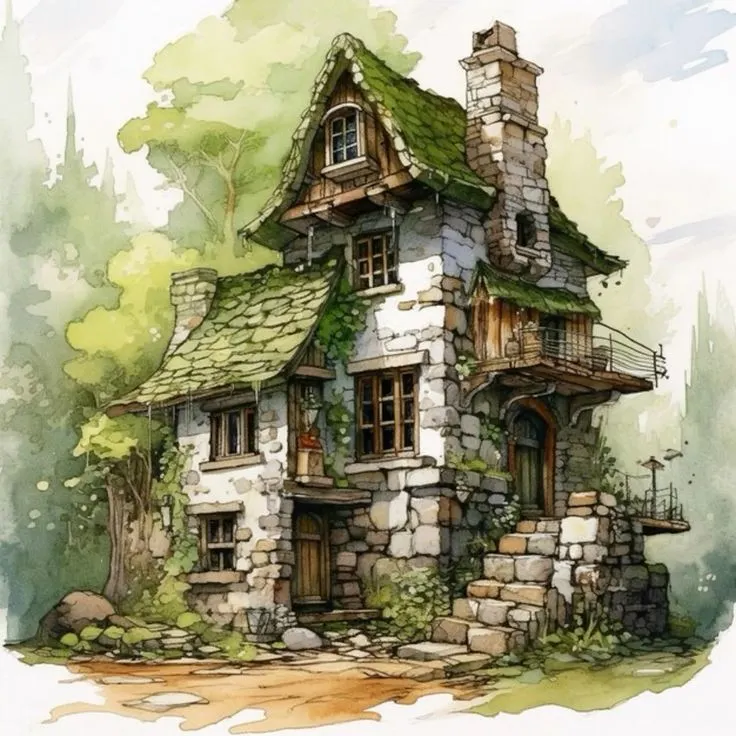
Example II :
Medium detail writing - A little more detail but not too much.
Read vertically, with out of character + dice rolls done on the side of the cards
Sectioned into Sessions or chapters
This is a work in progress, but would be how a Play-by-post would look in Kinopio


If the above is filled, still add your name here, and we can backfill if people drop off, or increase the game capacity
3. Test the sizing and make sure it’s at a good size for yourself.
Don’t forget to intro yourself*
Confirmed players + in discord - **Marked off**
Hey, name’s Christian. I’m the Director of Investments at a boutique finance firm in the US. I’ve been playing D&D for a few years now.
DISCORD HAS APPEARED
I got a request to make a discord channel for a bridge in communication - it will give us a way to chat / ping:
Usernames/discord handles will be scrubbed after I’ve seen it + sent you an invite. Leaving the original card for prosperity to the space
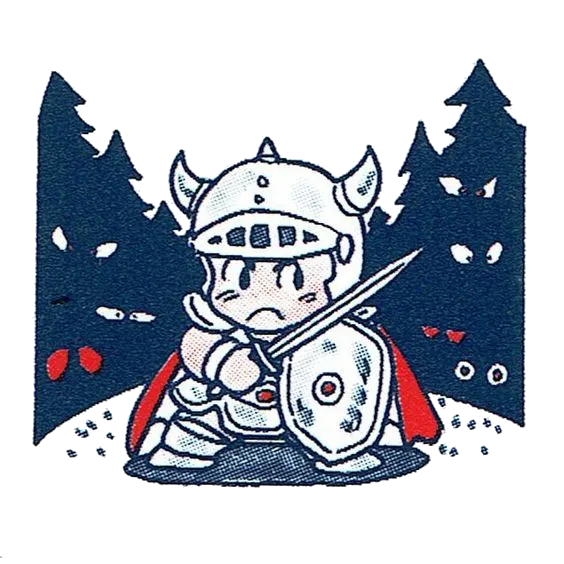


And we’ll be updating to 5e 2024
Haven’t played/DM 5E in years so this will be semi-new again for me - Feel free to ask away as it will help everyone here as well ✌️
Been playing/creating for the indie TTRPG space
Designer/Artist
Free account users:
Duplicating this space will use up your free cards!
If you are joining - please navigate to session 0 or comment somewhere in this space if you want to join.
There will be free character sheets to claim in the space, which won’t effect your card limit.
NEW!!

Thank you David
Welcome to 5E (2024)
A campaign:
Is an ongoing series of adventures that unfolds over multiple sessions. Campaigns often have a larger, evolving story with long-term character development, world-building, and story arcs that allow players to explore the setting and their characters more deeply.
*Optional, but good to know if you’re up for it being public
Start here if you’re...
Some dice info here
We are moving questions to session zero
Let’s make some characters!

I will answer rules within game and session zero - as this space is getting comically large

ABORT MISSION
Update - We have Kinopio Sheets!
David’s done an amazing job!
Method 1: Kinopio Character sheets (Recommended)
The character sheet (Template) will be cloned into a separate space, once you click on duplicate to space.
Tag it back into this group feature of Kinopio. So we can review and assist if you need a hand.

Session 0 - Portal
Now we are close to the end!
Adventure time
I never ran it, but it seems on the super light hearted side; Fantasy easy mode - like Shrek lol
When the ancient wizard Tyndareus develops a craving for a special treat from his childhood, he will stop at nothing to get his hands on the best apple pie in the whole world. He hires a group of adventurers to seek out the bakery that once produced the wonderful dessert – unfortunately for them, the bakery has long since been overrun by goblins. But all is not as it seems at Grammy’s Bakery, and Tyndareus isn’t the only one who’d do anything for those pies.
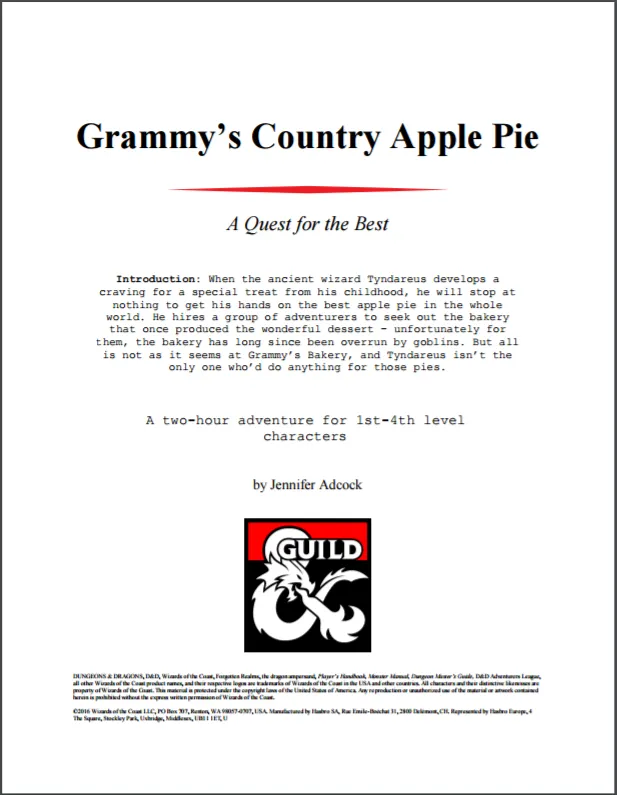
Light hearted tones
One shot
The updated adventure of what was called Lost Mines of Phandaln - Classic low fantasy romp, with goblins and dark wizards
This one has darker tones, but flexible dependin on the group tone. It will be a very Gothic themed game - think Berserk (Manga) or Dracula movies. More super naturals + gloom in this adventure
Another classic starting adventure, Fetch quest like, same starting town as the Adventure on the left, but there is a dragon!
Community made:
Official games https://marketplace.dndbeyond.com/adventures?hidden=true
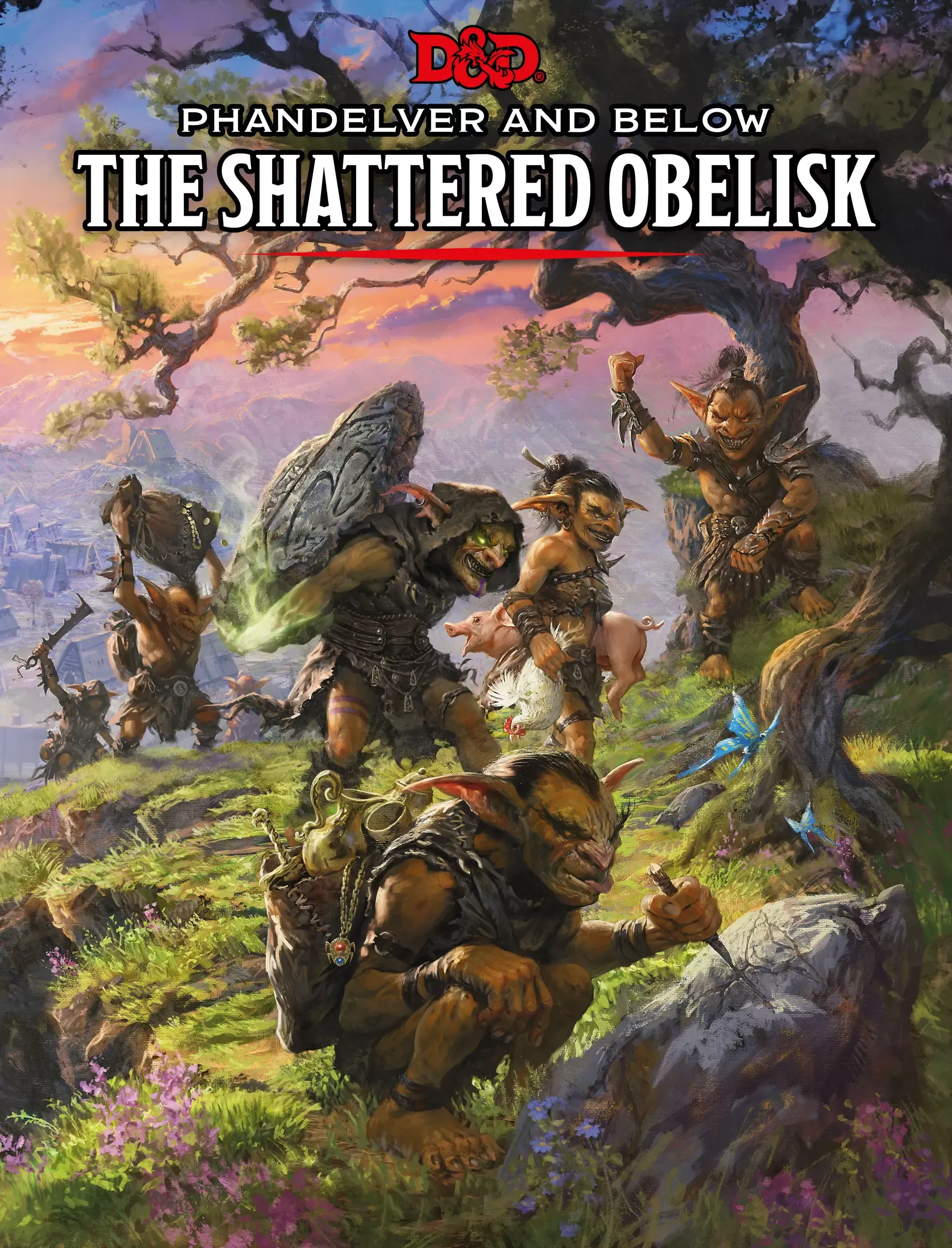
Medium
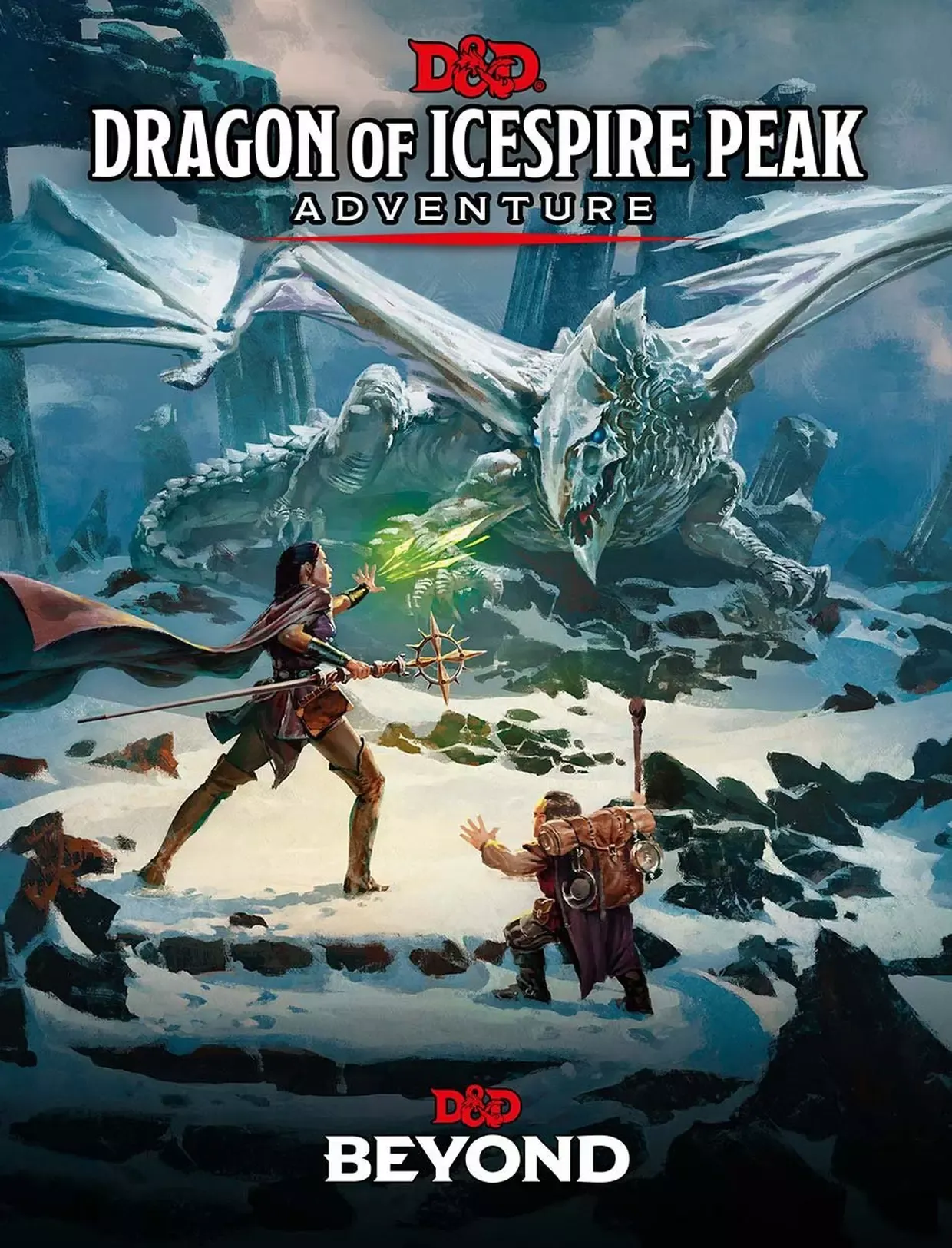
Medium
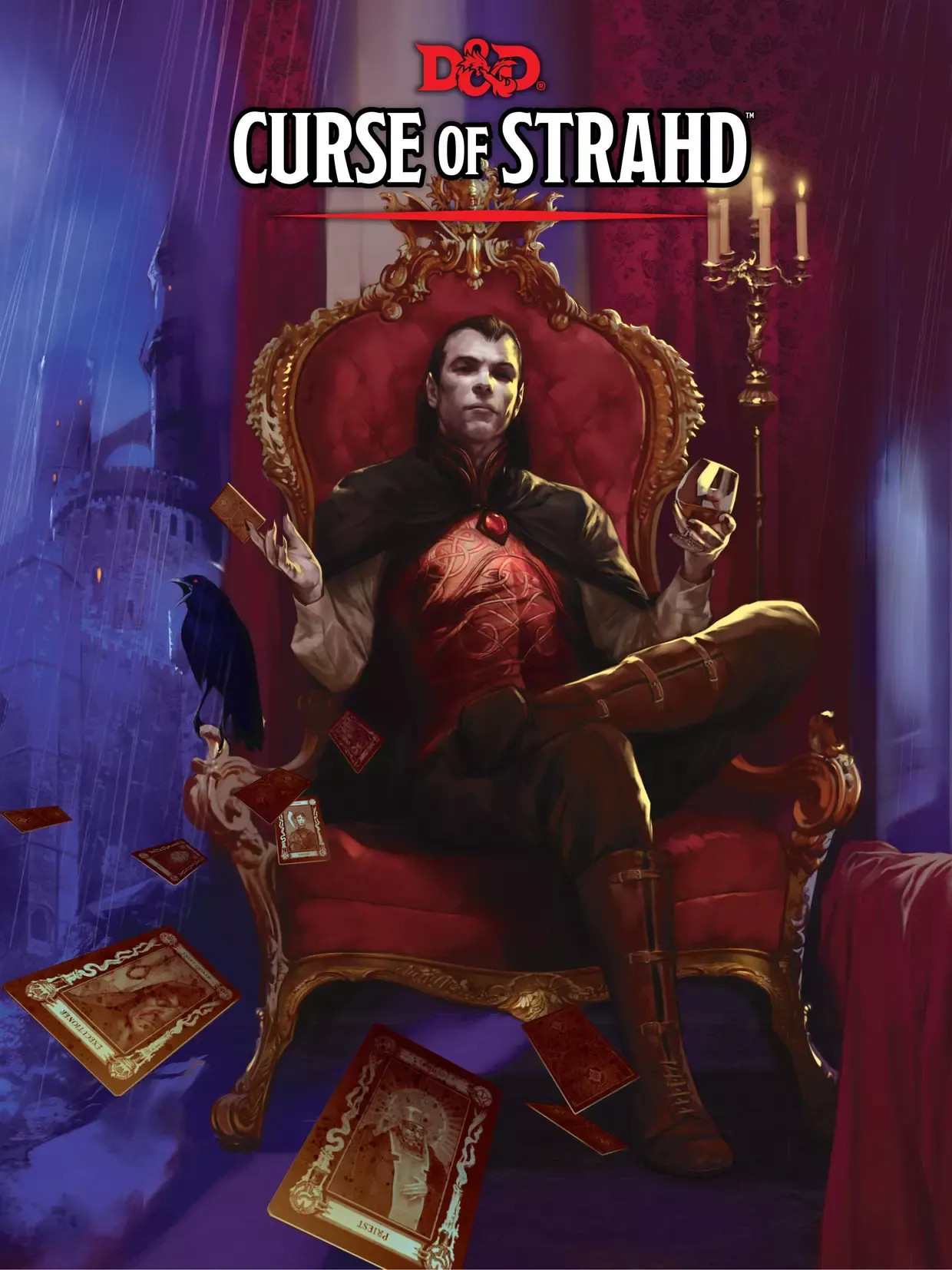
Long
The starting adventures - but you can really just start on any.
Add your suggestions as well :) I linked a list - happy to purchase any. I have most of the official ones from D&D beyond
Campaigns
Labeled with an estimated length
One-shot:
Is a single-session adventure with a self-contained story. It’s designed to be completed in one sitting (usually 2-5 sessions), often with a specific goal or scenario to resolve, making it ideal for a quick game or trying out new systems or characters.
This is like equivalent to a quick fetch quest.
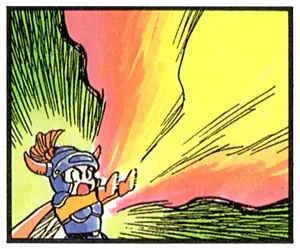
MISSION COMPLETE!
Same deal as method 1 - Duplicate + add to group
Okay its not bad once you have your own space for it + cards already in it to edit.
I’m not a fan of this method. quite tedious but I’ll make a template as well
2
Example II!
Mrcatttears
Spellcasting [Testing Code]
Before casting a spell, you
must have it prepared in
your mind or accessible
through a magic item, like
a Spell Scroll. Your features
determine your spell access,
any always-prepared spells,
and if you can change your
prepared list.
### Preparing Spells
**p235**
If you have level 1+ spells
to prepare, your spellcasting
feature specifies when and
how many spells you can
change. See **Spell Preparation
by Class**:
| Class | Change When | Spells |
|-----------|------------------|--------|
| Bard | Gain a level | One |
| Cleric | Long Rest | Any |
| Druid | Long Rest | Any |
| Paladin | Long Rest | One |
| Ranger | Long Rest | One |
| Sorcerer | Gain a level | One |
| Warlock | Gain a level | One |
| Wizard | Long Rest | Any |
Most spellcasting monsters
don’t change their spells,
but the DM can.
### Always-Prepared Spells
**p235**
Certain features provide
always-prepared spells,
which don’t count against
your prepared spell list.
### Casting in Armor
**p235**
You need armor proficiency
to cast spells in armor;
otherwise, it hinders you.
### Casting Spells
**p235**
Each spell description
contains details on casting
requirements, explained in
sections following each
spell’s name.
Steps to filling in your sheet
Method 2: Using the Official D&D Image
Using D&D beyond as the resource - have a look at the free rules
I’ll be going step by step on how to fill this out.
6. Lock and unlock as needed.
5. Use voting cards to track units.
15
Headings for ability/modifier units
4. Begin by adding 0’s to all the numbered fields as place holders
Unavailable item (not prepared or equipped)
For tracking
Dagger (For items)
2. Set your text/cards background transparency to 0
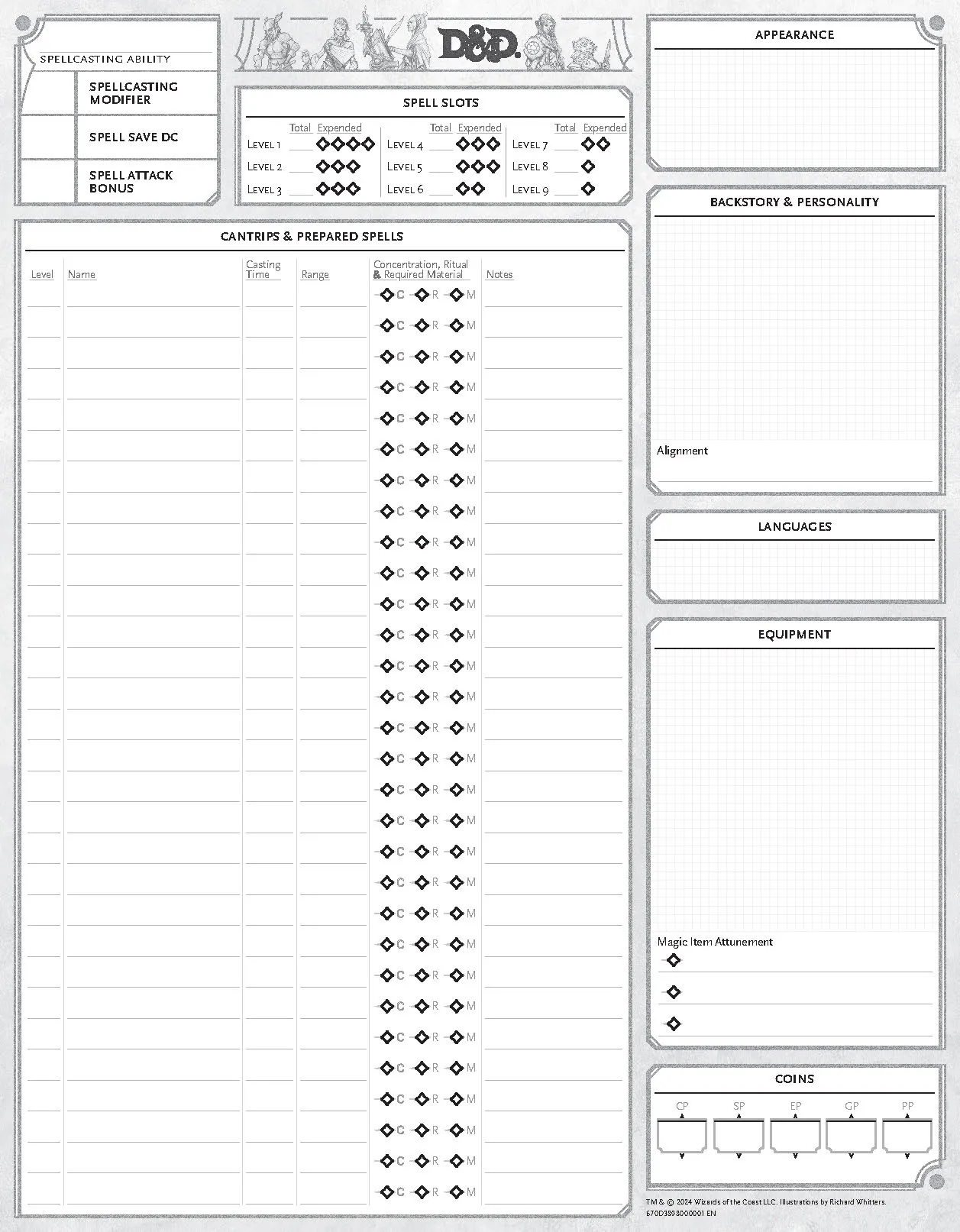
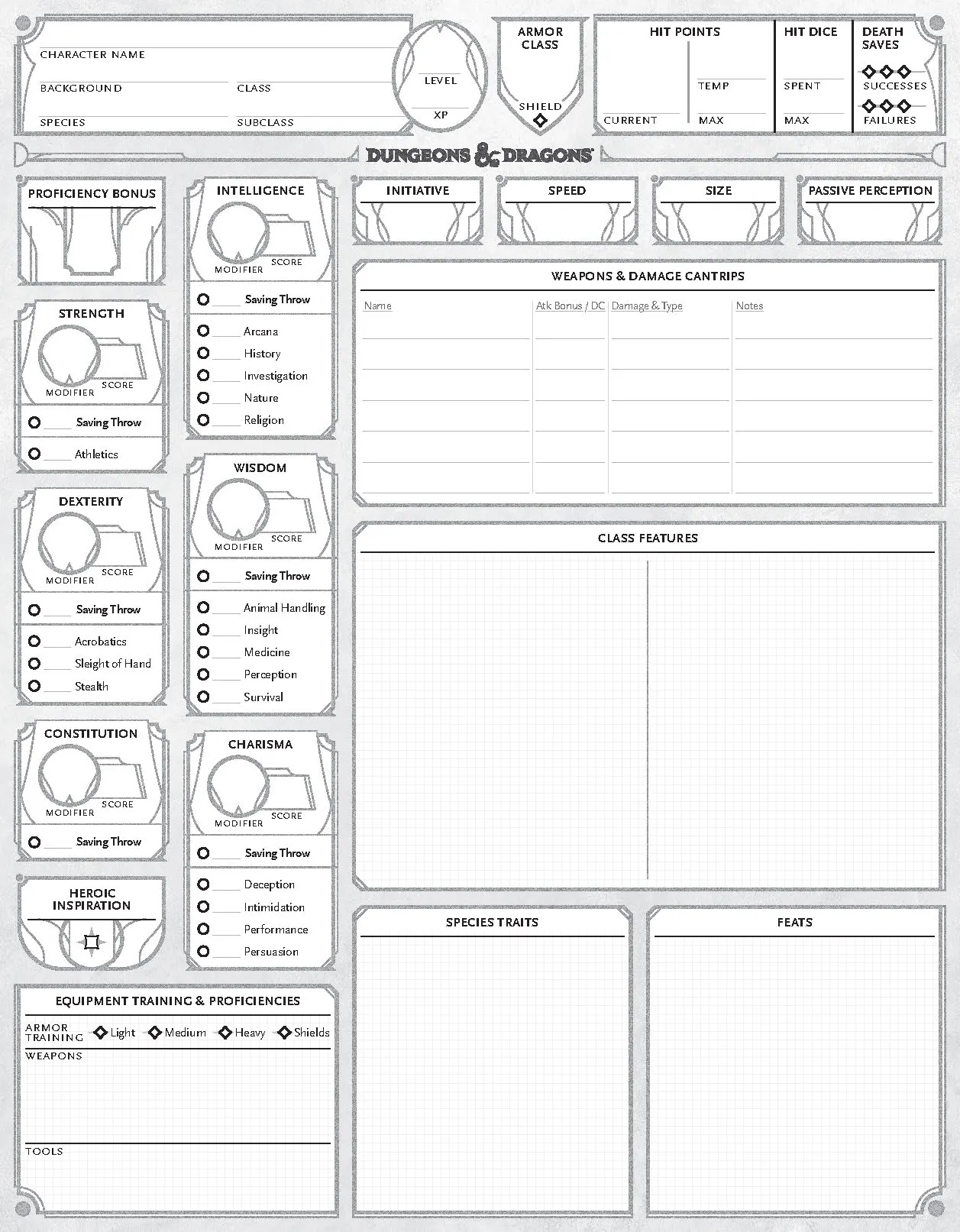
Sheet download - copy the card url
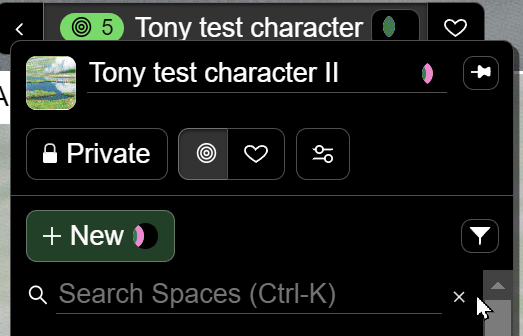
Or Recreate your own, this would be a fun exercise
We could just lock it..? For those who just wanna just a image. A little faded which is not great for accessibility.
You can follow how David’s done it or customize it how you like, as long as you know where to track things on the sheet. But David has made a template for you to copy
Example!
I prepare 4 spells level 1 spells, and mark 2 as unavailable with checkbox
I pick 3 cantrips and 6 level 1 spells.
Class features - Spellcasting, Ritual Adept, Arcane Recovery - I added comments for a quick rules reference
Proficiency Bonus +2
Wizard Class feature - Then I look at the table, and see what I get at level 1 and add accordingly.
B - Gold option - I don’t normally pick this option, as its just gold. Which means you get 55 Gold pieces to buy what you like. I recommend A until you get the hang of the game
Starting Equipment - A (Item stack) = 2 Daggers, Arcane Focus (Quarterstaff), Robe, Spellbook, Scholar’s Pack (This has more items, which I’ve placed in a comment to save space), and 5 GP
Hit die - D6, what you use to roll when healing on a short/long rest (more on that later)
Primary Ability -
If you go to the page andlook at Wizard - Core Wizard Traits - Those are the fields you want to begin copying to your sheet, but for your class.
Wizard Class
It will be a good example as it has spells and a little bit more of a complex class
I went with Wizard
1. Choose a Class.
Every adventurer is a member of a class. A class broadly describes a character’s vocation, special talents, and favored tactics.
Magic Missile
Level 1 Evocation
Casting Time: Action
Range: 120 feet
Components: V, S
Duration: Instantaneous
You create three glowing darts of magical force. Each dart strikes a creature of your choice that you can see within range. A dart deals 1d4 + 1 Force damage to its target. The darts all strike simultaneously, and you can direct them to hit one creature or several.
Using a Higher-Level Spell Slot. The spell creates one more dart for each spell slot level above 1.
Thunderwave
Level 1 Evocation
Casting Time: Action
Range: Self (15-foot cube)
Components: V, S
Duration: Instantaneous
You unleash a wave of thunderous energy. Each creature in a 15-foot Cube originating from you makes a Constitution saving throw. On a failed save, a creature takes 2d8 Thunder damage and is pushed 10 feet away from you. On a successful save, a creature takes half as much damage only.
In addition, unsecured objects that are entirely within the Cube are pushed 10 feet away from you, and a thunderous boom is audible within 300 feet.
Using a Higher-Level Spell
Mage Armor
Level 1 Abjuration
Casting Time: Action
Range: Touch
Components: V, S, M (a piece of cured leather)
Duration: 8 hours
You touch a willing creature who isn’t wearing armor. Until the spell ends, the target’s base AC becomes 13 plus its Dexterity modifier. The spell ends early if the target dons armor.
Sleep
Level 1 Enchantment
Casting Time: Action
Range: 60 feet
Components: V, S, M (a pinch of sand or rose petals)
Duration: Concentration, up to 1 minute
Each creature of your choice in a 5-foot-radius Sphere centered on a point within range must succeed on a Wisdom saving throw or have the Incapacitated condition until the end of its next turn, at which point it must repeat the save. If the target fails the second save, the target has the Unconscious condition for the duration. The spell ends on a target if it takes damage or someone within 5 feet of it takes an action to shake it out of the spell’s effect.
Creatures that don’t sleep, such as elves, or that have Immunity to the Exhaustion condition automatically succeed on saves against this spell.
Ray of Frost
Evocation Cantrip
Casting Time: Action
Range: 60 feet
Components: V, S
Duration: Instantaneous
A frigid beam of blue-white light streaks toward a creature within range. Make a ranged spell attack against the target. On a hit, it takes 1d8 Cold damage, and its Speed is reduced by 10 feet until the start of your next turn.
Cantrip Upgrade. The damage increases by 1d8 when you reach levels 5 (2d8), 11 (3d8), and 17 (4d8).
Feather Fall
Level 1 Transmutation
Casting Time: Reaction, which you take when you or a creature you can see within 60 feet of you falls
Range: 60 feet
Components: V, M (a small feather or piece of down)
Duration: 1 minute
Choose up to five falling creatures within range. A falling creature’s rate of descent slows to 60 feet per round until the spell ends. If a creature lands before the spell ends, the creature takes no damage from the fall, and the spell ends for that creature.
Ice Knife
Level 1 Conjuration
Casting Time: Action
Range: 60 feet
Components: S, M (a drop of water or a piece of ice)
Duration: Instantaneous
You create a shard of ice and fling it at one creature within range. Make a ranged spell attack against the target. On a hit, the target takes 1d10 Piercing damage. Hit or miss, the shard then explodes. The target and each creature within 5 feet of it must succeed on a Dexterity saving throw or take 2d6 Cold damage.
Using a Higher-Level Spell Slot. The Cold damage increases by 1d6 for each spell slot level above 1.
13
Detect Magic
Level 1 Divination
Casting Time: Action or Ritual
Range: Self (30-foot radius)
Components: V, S
Duration: Concentration, up to 10 minutes
For the duration, you sense the presence of magical effects within 30 feet of yourself. If you sense such effects, you can take the Magic action to see a faint aura around any visible creature or object in the area that bears the magic, and if an effect was created by a spell, you learn the spell’s school of magic.
The spell is blocked by 1 foot of stone, dirt, or wood; 1 inch of metal; or a thin sheet of lead.
Mage Hand
Conjuration Cantrip
Casting Time: Action
Range: 30 feet
Components: V, S
Duration: 1 minute
A spectral, floating hand appears at a point you choose within range. The hand lasts for the duration. The hand vanishes if it is ever more than 30 feet away from you or if you cast this spell again.
When you cast the spell, you can use the hand to manipulate an object, open an unlocked door or container, stow or retrieve an item from an open container, or pour the contents out of a vial.
As a Magic action on your later turns, you can control the hand thus again. As part of that action, you can move the hand up to 30 feet.
The hand can’t attack, activate magic items, or carry more than 10 pounds.
Level one
Spellbook,
Parchment
Book
Scholar’s Pack (Items inside)
Backpack,Book, Ink, Ink Pen,
Lamp, 10 flasks of Oil, 10 sheets of Parchment, and Tinderbox.
Arcane Focus (Quarterstaff),
Draconic
Robe
Light
Evocation Cantrip
Casting Time: Action
Range: Touch
Components: V, M (a firefly or phosphorescent moss)
Duration: 1 hour
You touch one Large or smaller object that isn’t being worn or carried by someone else. Until the spell ends, the object sheds Bright Light in a 20-foot radius and Dim Light for an additional 20 feet. The light can be colored as you like.
Covering the object with something opaque blocks the light. The spell ends if you cast it again.
Cantrips
Common + Sign Language
Lawful neutral (LN)
Something about Ice giants, trickster, loves oats.
Look like Loki
Alert
Magic Initiate
Because spells need referencing - I’d just make them as cards with checkboxes to mark what isn’t prepared.
1 Ice knife
1 Thunderwave
1 Sleep
1 Magic Missile,
1 Mage Armor
Versatile: Alert feat taken
.
1 Feather Fall
Heroic Inspiration
1 Detect Magic
0 Ray of Frost
Calligrapher’s Supplies
0 Mage Hand,
0 Light
Simple weapons
Topple
5
13
Thrown (20/60 ft.)
Versatile
3
13
✅
Light
Intelligence
10
Finesse
+1
Arcane Recovery
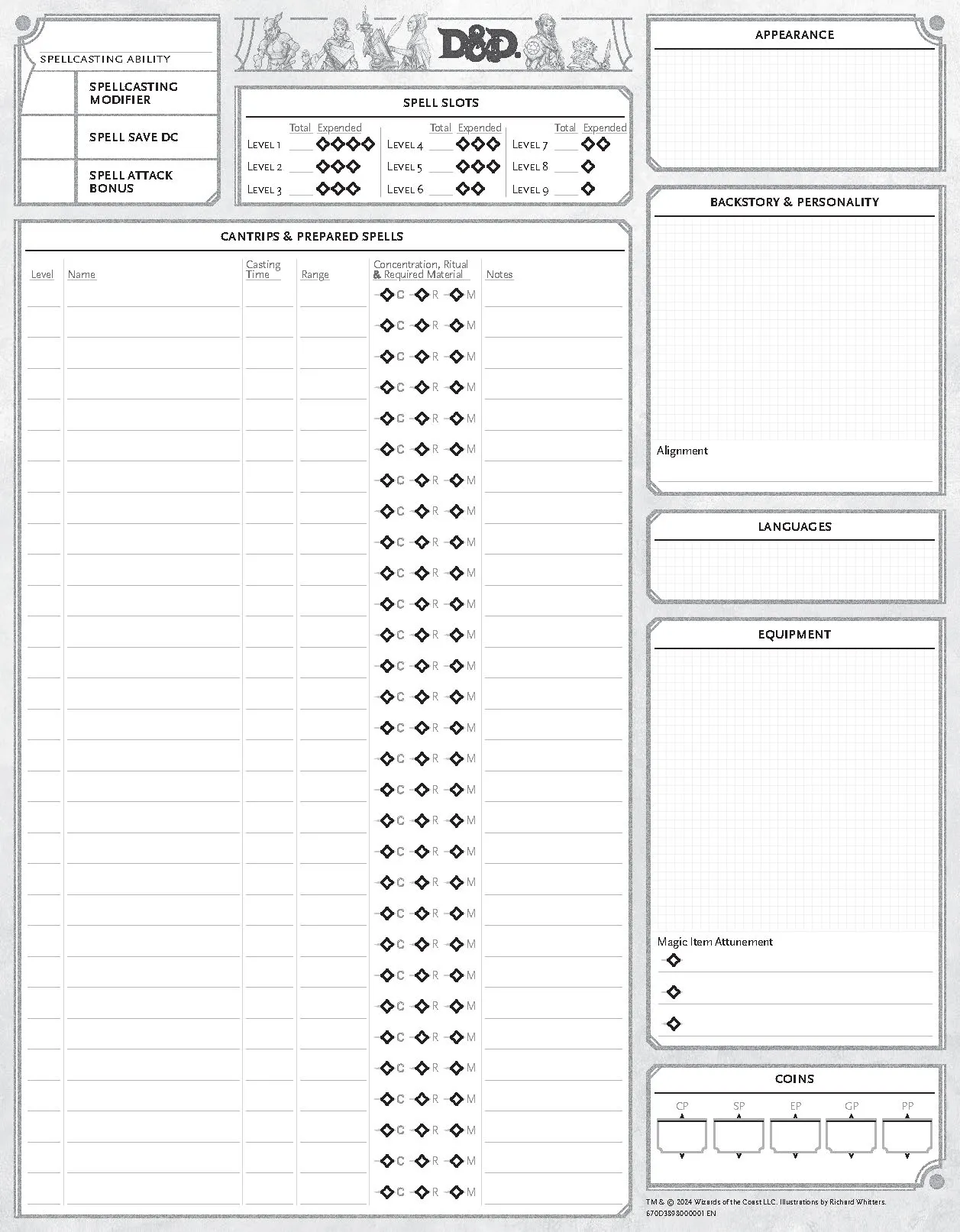
1d6 Bludgeoning
Ritual Adept
1d4 piercing
13
✅
1d4 piercing
+1
5ft
D6
+1
+1
+1
--
7
15
--
Quarterstaff
30
Dagger
+2
Dagger
10
7
Last bit! we’ll fill in the rest. Passive Perception = 10 + Wisdom (Perception) check modifier Which for me is 10+2 = 12 Hit points (HP) 6 + Con. modifier. Which is 6+1 = 7 Initiative. Dexterity modifier - 0 for me Armor Class - Since I’m a wizard I have no armor, making it 10 + Dex mod = 10 , else for those that have amour refer to your item info. Weapon bonus Melee is STR mod + Proficiency Bonus Daggers = -1+2 = +1 Quarterstaff = Same, +1 Spell save DC = 8 + spellcasting ability modifier + Proficiency Bonus Mine is 13 Spell attack modifier = spellcasting ability modifier + Proficiency Bonus And 5
0
10
Fill in Details. Using the choices you’ve made, fill in the remaining details on your character sheet.
✅
✅
16
Depending on how you roleplay, this bit is a nice guide; but don’t feel pressured to honour it. After all, there is character arcs.
8
1
Nine alignments
+3
-1
Wizard
+2
A creature’s alignment broadly describes its ethical attitudes and ideals. Alignment is a combination of two factors: one identifies morality (good, evil, or neutral), and the other describes attitudes toward order (lawful, chaotic, or neutral).
Now we determine the modifier bonus against our score with this table and add the results to our sheet.
| Score | Modifier |
|-------|----------|
| 3 | -4 |
| 4–5 | -3 |
| 6–7 | -2 |
| 8–9 | -1 |
| 10–11 | +0 |
| 12–13 | +1 |
| 14–15 | +2 |
| 16–17 | +3 |
| 18–19 | +4 |
| 20 | +5 |
Human
Sage
Skill Proficiencies:
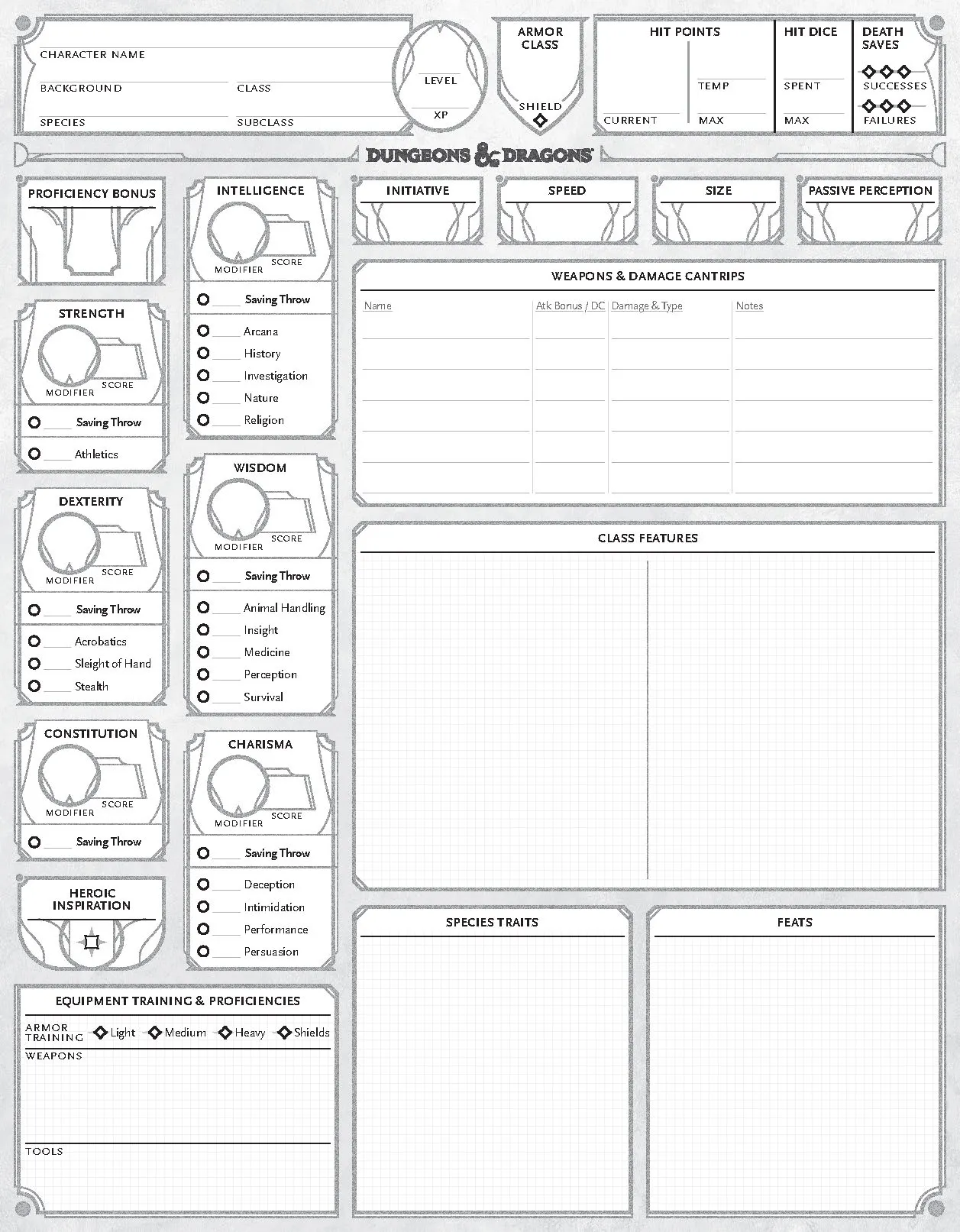
Pick ability scores - I’ll use standard array: 15, 14, 13, 12, 10, 8. As wizard I’ll make Int and Wisdom my top ranging, then fill the rest as I see fit. Since I got bonuses; I’ll add on top of my Array. (+1 int,con,wis)
Determine Ability Scores. Much of what your character does in the game depends on the character’s six abilities.
Feat: Magic Initiate (Wizard) In 5e 2024 you get a Origin feat - this gives you a set of unique abilities that plays into that background/feat. So I get to pick 2 more cantrips or a level 1 spell - I pick an extra spell - Ice knife
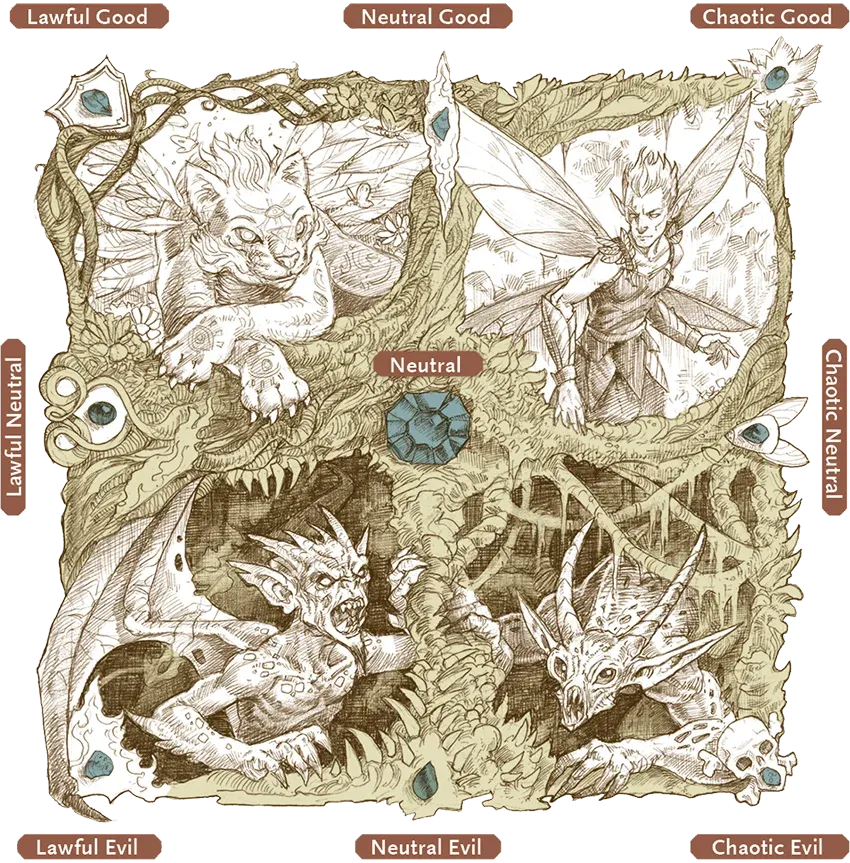
Pick three languages - Common - Common Sign Language - Draconic
Choose an Alignment. Alignment is a shorthand for your character’s moral compass.
Ability Scores: Constitution, Intelligence, Wisdom (I’m doing a 1 per Ability spread) You get three Abilities score bonuses for a background. Increase one by 2 and another one by 1, or increase all three by 1. Note: None of these increases can raise a score above 20. Maybe that’s why the game doesn’t allow a 3 stack.
Creature Type: Humanoid Size: Medium (about 4-7 feet tall) or Small (about 2-4 feet tall), chosen when you select this species 5ft Speed: 30 feet Resourceful. You gain Heroic Inspiration whenever you finish a Long Rest. Skillful. You gain proficiency in one skill of your choice. Picked Survival Versatile. You gain an Origin feat of your choice. Then Alert
A selection of Free Backgrounds
Species: Human
Background: As I’m learning towards a magic type, I’ll pick something along that archetype - Sage. You can pick any, whatever suits your character. If your stumped, think about a fictional character and build close to that.
2. Determine Origin.
A character’s origin includes two elements: background and species. How did the character spend the years leading up to a life of adventure? Who are the character’s ancestors? You can also choose your character’s languages.
Well cairn of course and ive had some exposure to d&d from baldurs gate 3
You’ll be added to the new Kinopio feature: groups as well.
Kinopio tip 1 : Resizing
If you need to resize cards to be the same width, select the cards you want and shrink them down to it’s smallest width, and then size back up to suit.
Kinopio tip 3: Easy Card creating
If you want to quickly make cards. Just place a line break on each word or sentence you’d like to split. If split card doesn’t show up at the bottom of the card (In edit mode) Just click back in to it.
Kinopio tip 2: Inherit parent card colour
If you want to copy the styling of a card, go into the card you want to copy, hit enter, this will create a new card and you’ll inherit those colours :)
Poll
Poll
Free rules
Poll


I’ve played bg3, and did the last ttrpg campaign on Kinopio which used another system
What game/system did you play or know?
Nice.
Oh boy, now we gota convert this into Kinopio... ☠️
It does help a lot if Players understand the rules. But what helps from my experience is, knowing your character. How to use spells, the actions. Given that its Play-by-post - there is not really that time pressure. Which is great. We’ll just need to work out the formatting
Something that would be fun to do, which is the character building side of D&D. Then we can go into rules a bit later - as it is quite intense for new folks; and for me tbh lol Having said that, rules is a littler easier for players though ... as technically you just need to know the basics. The rules adjudicating usually falls onto the Dungeon master. Unless you also want to help. Which then you’ll be assisting the DM in “Rules lawyering or Rule Court” - Which... depending on the group, is a good thing, or bog down unhappy times.
Or just google “roll me a d20”
This space is to learn the rules as well, so open to public if you rather partipate that way
Add your names here if you’d like to join
Looking for 3-5 players
(I’ve made a poll to get the numbers)
Guide notes:
Z-reading order
Q&A - Crystal ball
Play this while in this space :)
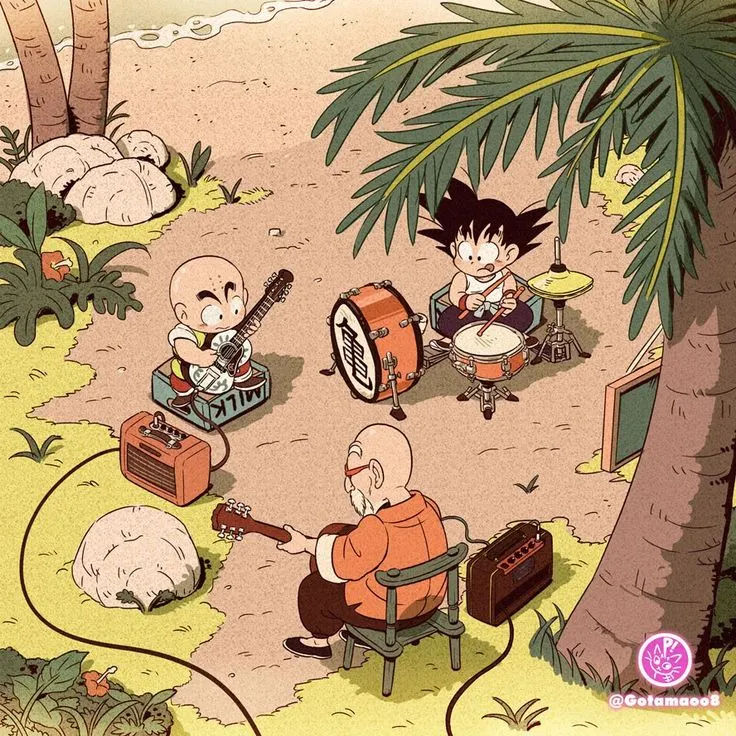
I’m David known online mostly as Xou. Im a middle schooler from Hungary trying to figure out what i like doing most, im very into graphic/ui design and im also exploring art.
Hihi I’m Piri , the creator of Kinopio. I like making software and exploring dank lore
2.
Roll it online via googling “dice roller”
I don’t care if you fudge the numbers etc, I just go by an honor system. Whatever is fun for you. But failing is also fun and makes for a good time. So do you.
B.Y.O Dice
1.
You can buy some physical dice and let me know your results -
D20 - It’s often used to determine if a player succeeds. Via Skill checks
Though all can be used a game of chance. 1-in-12 (D12) or 1-in-4 (D4) for example
D12 - Determine the high damage or healing of an attack, or spell
D10 - Determine the high damage or healing of an attack, or spell
D8 - Determine the damage caused by large weapons or spells.
D6 - Determine the damage caused by medium weapons or spells.
D4 - determine the damage caused by light / weaker weapons; or fist and improvised weapon - like throwing a rock or chair.
Rolls defined (Left to right):

There is 6 types. Mainly used to determine a range of chance. D20 is most common in D&D. The rest are mainly used to determine damage or healing, but also used to roll on chance.
I don’t expect everyone to write and respond to any standards - so write how you’d like or find natural, and I will prompt further if I need anything clarified. The only thing I ask would be formatting the responses so it can be read in a consistent manner See link to back to the style guide
TTRPG by nature is quite collaborative.
Nothing really... just time and imagination haha - Oh, there is one thing. Some sort of way to roll dice
Might not need connections if we are working vertically,. unless we go into OOC
Using
Bolding key areas and NPC names
Still work in progress but trying out new things for this PbP

Once you’re comfortable, the next section below is “creating a character and adventure choices”
Read in this section Horizontally

You don’t need to know all the rules, as you’ll begin to learn the flow as you play. Plus we’re playing Asynchronously, which we can look up (If you’re got a copy of the Players handbook 2024), or ask me.
I’ll pick out bits of rules you may need // be useful as players.
Not impossible to do to work things in, just need upfront scaffolding - which is the perk of TTRPGs. Anything can work, as long as we all have an agreed buy-in and set the “Truth of the world”
You may have questions about D&D and TTRPG in general, so I’ll rattle off a few things - but please add your questions in this space if you got some.

Welcome to the space.
Classic example is a fantasy based world with magic, but then we also have creatures that have guns, laser guns, walking ghost races. This will then lead to questions on what kind of power the player has over people that don’t and how the world used that technology. And how do civilians react to walking ghosts races. Is this common or a non-phased scenario? This will then impact how death works in the game etc etc.
We’ll work together on what kind of game we want. From my experience, limiting races and classes hones in on a particular world tone. I’ve had games where I opened all races - this included intergalactic races + homebrew (Things created outside of the official rules // Think modding in the video game space) This is great but can easily break immersions if you’re trying to fact check the reasoning.
I’ll been leaning on D&D beyond, which is an online resource when it comes to D&D - there is content gated things, but I own most of the books and I can pull specific things upon request so you don’t need to shell out any $$$
Maps
Mode of play: Play by post
Group notes
Technical note: Once a space gets heavy with cards, we’ll branch into a new space to keep things speedy and optimised
Kinopio :)
Separate spaces


Greetings and salutations!





